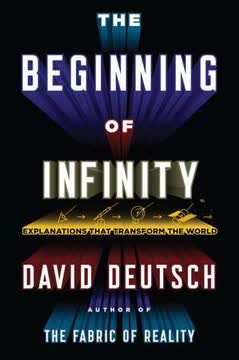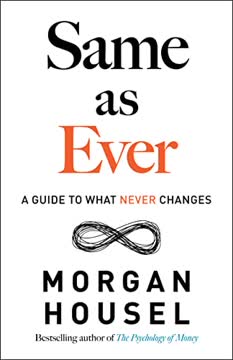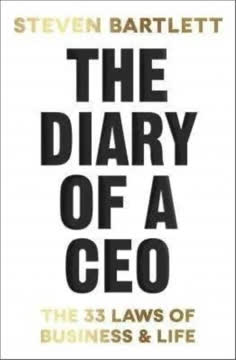Key Takeaways
1. The Problem: Seven Traps Limit Your Potential
You are about to experience history’s highest rate of change, disruption, & opportunity . . .
Stuck in grooves. Despite unprecedented opportunity, our ability to change is limited by seven specific traps that collectively reduce innovation potential. These traps blind us to new possibilities and compel us to stick to familiar paths, much like Roman chariot ruts determined the width of train tracks and even NASA rocket boosters centuries later. This path dependency explains why most people and companies miss out on realizing their full potential.
Proven methods exist. Breaking free from these traps and identifying opportunities faster is possible using proven methods. The book shares techniques used with top innovators at companies like Disney, Starbucks, Google, and NASA, drawing on over 10,000 innovation projects and the collective wisdom of hundreds of clients. These skills are crucial as the next 5-10 years are set to redefine humanity with technologies like mind-reading interfaces, augmented reality, and advanced AI.
Dodge the traps. To create the future, you must actively dodge the seven traps of path dependency: The Subtlety of Opportunity, Neurological Shortcuts, The Ease of Inaction, Optionality, The Traps of Success, Linear Thinking, and Discomfort vs. Breakthrough. Understanding these puzzles allows you to defeat them and find new paths of opportunity, moving toward something new and making change a reality.
2. Trap 1: The Subtlety of Opportunity
EVEN IDEAS THAT CHANGE THE WORLD CAN BE DISCOUNTED BY MARKET LEADERS.
Great ideas seem awkward. When people miss opportunities in their own industry, it's often because new ideas seem awkward and different, not because they were blind to them. Tony the Inventor's hard drive gadget was dismissed by Phillips but became the iPod at Apple, despite initial skepticism from industry giants like Microsoft, Motorola, Palm, Nokia, and Blackberry. These market leaders were too comfortable and confident in their familiar paths.
Overestimating control. Successful people and companies frequently overestimate their control and command of their market, leading them to dismiss rival ideas. Enzo Ferrari told tractor-maker Ferruccio Lamborghini to stick to tractors, only for Lamborghini to build rival sports cars. History is filled with examples of market leaders overlooking revolutionary ideas, from England rejecting Edison's light bulb to Kodak inventing but failing to adapt to digital photography.
Outsiders see potential. Being outside of an industry can make it easier to see the potential in new ideas. Xerox invented the mouse, GUI, email, and networked computers with their Alto system a decade ahead of its time, but were too focused on photocopiers to commercialize it. Steve Jobs and Bill Gates saw the potential immediately during a tour, leading to Apple and Microsoft's success. Even billion-dollar startups like Google, Apple, and Amazon faced significant rejection, highlighting how difficult it is to see potential in something new.
3. Trap 2: Neurological Shortcuts Create Blind Spots
Practice creates myelin, which makes you smarter and faster, but it also makes you repetitive, consistent, and dismissive.
Creativity gets limited. As we grow, our creativity is limited by learned behavior, rules, policies, and the demands of adult life. Boardrooms full of people who built careers challenging ideas further dissolve creative thinking intensity. Our brains create shortcuts using myelin, a fatty tissue that speeds up neural pathways for practiced tasks, making us faster and more efficient but also repetitive and resistant to change.
Myelin creates ruts. The paper clip test demonstrates how myelin narrows our thinking; adults typically list 10-15 uses, while kindergarteners list 200+, showing we revert to familiar patterns. This narrowing impacts complex decision-making, causing us to lose 95% of raw creativity despite increasing intelligence. Myelin creates literal pathways that keep us repeating past decisions, a terrible trap for innovation.
Practice expansive thinking. To access hidden potential and overcome these blind spots, you need to look at problems from multiple perspectives. Workshops with diverse participants, simulating competitor approaches, or forcing different problem-solving methods can help. This practice builds new myelin pathways for creative problem-solving, making you smarter, faster, and better at innovation and change, even as your brain evolves with age.
4. Trap 3: The Ease of Inaction Paralyzes Progress
THE BUSIER YOU BECOME, THE EASIER IT IS TO STAY ON YOUR PATH, DO NOTHING, AND MISS OPPORTUNITY.
Resistance is fueled. We all exhibit resistance to change, preferring stability. Factors like lack of time, preference for simplicity, fear of failure, rigid structure, and diffusion of responsibility fuel this resistance, making inaction easier. The QWERTY keyboard layout, designed to prevent typewriter keys from jamming, persists today despite the more efficient Dvorak layout, illustrating our unwillingness to change even for efficiency gains.
Audit action limiters. You can't eliminate all resistance, but you can internalize how habits and structure impact decision-making. Busyness, for example, provides dopamine hits from simple tasks like clearing email, distracting from deep thought. Auditing categories like busyness, constraints, and groupthink can reveal obstacles blocking deep thought and lead to solutions like:
- No meetings on Monday mornings
- 20-minute meeting caps
- Blue-sky innovation sessions
Create urgency. Most disrupted companies lack urgency, believing things are "going well." Mathematically, this is impossible when nearly half of major brands face disruption soon. Companies feeling "troubled" or "paranoid" (like Google or NASA) are often more open to change and experimentation due to fear or perpetual urgency. Igniting a sense of urgency and purpose is crucial for making change happen, as seen with Capital One tripling bookings during a bleak period or Domino's stock soaring after embracing risky ideas born from urgency.
5. Trap 4: Success & Linear Thinking Blind You
DON’T PREPARE FOR CHANGE, PREPARE FOR ACCELERATION.
Farming vs. Hunting. After 10,000 years of farming, we are prewired to repeat and optimize whatever led to past success. Success makes us loyal, consistent, and disciplined (farming), but also protective, complacent, and repetitive (traps). Hunting, in contrast, is curious, insatiable, and willing to destroy, needed to find new opportunity. Most organizations skew towards farming, inhibiting change.
Linear prediction trap. Our brains struggle with exponential change, assuming the next interval will be similar to the last. Smart people are particularly bad at predicting 3-5 years out, overestimating their progress while underestimating external disruption. Business leaders often move faster than before, but not fast enough for an accelerating world.
Internalize the pace. The "Pace of Change" workshop reveals this trap by comparing past intervals of human progress (50 years from 1900-1950, 40 years from 1950-1990, 15 years from 1990-2005, 10 years from 2005-2015). By internalizing how much changed in the last 10-15 years, you realize your far-future predictions (10+ years out) are likely to happen in 3-5 years. This shock can ignite action and help convince others that rapid change is imminent.
6. Trap 5: Breakthrough Requires Discomfort
BREAKTHROUGH ONLY OCCURS OUTSIDE YOUR COMFORT ZONE.
Push past comfort. Breakthrough, by definition, is outside your comfort zone, which people hate. This explains why smart people miss great ideas. The author illustrates this with his own business mistakes, showing that predicting and creating the future is tough even for experts. To achieve breakthrough, you must become comfortable with discomfort and learn the characteristics of different types of opportunities.
Four types of breakthrough:
- Defining Choices: Opportunities specifically presented that you must say yes or no to (e.g., not paying $1500 for a feature that became Pinterest). Requires identifying your comfort zone and making bold, out-of-comfort decisions.
- Dismissible Trends: Seeing trends but dismissing their potential impact due to expertise or complacency (e.g., media titans dismissing social media, Nokia dismissing iPhone). Requires humility and recognizing the blinding power of expertise.
- Workshoppable Ideas: Overlooking potential in ideas that could be developed through collaboration (e.g., not immediately building a custom service requested by a client). Requires challenging what seems possible and deep-diving curiosities.
- Hidden Gems: The big idea you are currently overlooking. Requires breaking rules, pushing harder, acting sooner, failing faster, and never giving up.
Master discomfort. Finding your hidden gem requires applying these concepts, facing experimental failure, resistance, and skepticism. The author's own journey shows how failures (online ads, "being Pinterest") led to unexpected success (research firm, speaking career). Like Rob McEwen finding $39 billion in gold by opening his data to outsiders, opportunity is often close but requires looking past familiar methods and embracing discomfort.
7. The Solution: Build a Culture of Innovation
Culture is more important than strategy.
Culture eats strategy. Peter Drucker's famous quote highlights that a great idea (strategy) is useless if your organization's culture prevents you from executing it. Culture underlies your ability to adapt and is magnified during dramatic change. While organizations perceive the need to adapt, uncertainty and resistance often paralyze innovation. Winning the future begins with a culture that enables disruptive thinking.
Five ingredients. A culture of innovation requires five core ingredients: Urgency, Perspective, Failure, Customer Obsession, and Intentional Destruction. Urgency is the fuel, enabling action during change. Perspective is how you view the future and problems. Failure is necessary for testing and learning. Customer Obsession drives relevant ideas. Intentional Destruction breaks down hindering structures.
Escape the boiling pot. Disruptive evolution is inescapable, enabling new business models and toppling giants. These shifts creep up slowly, like boiling a frog, making urgency less apparent until it's too late. Recognizing subtle trends is key to adaptation. While small shifts can disrupt markets (like disk drives or semiconductors), incumbents often fail to adapt, focusing on protecting what they have rather than adapting to the next big thing.
8. Culture: Create Urgency and Spark Action
IF YOU WANT CHANGE TO HAPPEN, YOU MUST BEGIN BY IGNITING A SENSE OF URGENCY AND PURPOSE.
Chaos creates opportunity. People often cite lack of buy-in or funding as barriers to change, but some of the greatest opportunities arise during crises. Companies founded during recessions include Disney, CNN, Microsoft, and Apple. Crisis can reduce time to market, cut red tape, enhance risk tolerance, and force a deeper understanding of customer needs, as seen when Capital One tripled bookings during a bleak period.
Predict scenarios. You can't predict the future with certainty, but you can predict scenarios to prepare for disruptive change. Pierre Wack's scenario planning for Royal Dutch Shell in the 1970s, anticipating an oil crisis, allowed them to prepare and emerge as the most profitable oil company. Visualizing disaster and opportunity, like ski racers visualizing every turn, trains your mind to react during unexpected situations and sparks urgency.
Visualize dystopia/utopia. The Utopia vs. Dystopia workshop helps create urgency by having teams imagine realistic paths to failure and success. Realizing dystopia happens with inaction fuels urgency, while seeing utopia requires significant effort. This exercise, used with the Chicago Tribune and NASA, helps teams identify key risks and opportunities, align priorities (like public support, short-term wins, collaboration), and feel involved in co-creating the future, leading to bold actions like the Tribune becoming the #1 most profitable news organization or NASA teams prototyping "space beer" to gain public support.
9. Culture: Shift Perspective and Obsess About Customers
MARKET FROM THE PERSPECTIVE OF THE CUSTOMER, NOT THE ADVERTISER.
Perspective determines destiny. How you define your organization and role significantly impacts your destiny. Smith Corona, the "best typewriter company," failed to enter computing despite inventing related technologies because they were seduced by complacency and focused on optimizing their existing market. Their perspective as a typewriter company blinded them to the larger opportunity of "tools for recording human thought."
Look beyond failure. Don't let the failure of others reinforce inaction. Remington's failure in computing after being a typewriter rival reinforced Smith Corona's decision to stay put. Similarly, the RIAA focused on protecting CD sales by suing customers and innovators like Napster, missing the opportunity to lead the future of music distribution, which iTunes eventually captured.
Obsess and connect. Breakthrough ideas stem from deep customer understanding. Creating an emotional connection (like Iron Eyes Cody) is good, but a cultural connection (like "Don't Mess with Texas") is empowering, making your product part of a customer's identity. Customer obsession requires observing customers in their zone, challenging assumptions about what you think you know, and seeking authenticity. Brands like Patagonia and Lululemon anchor themselves on cause and purpose, aligning with younger generations' desire for impact and creating deep connections with fans who support the same mission.
10. Culture: Embrace Failure and Intentional Destruction
SUCCESSFUL IDEAS FIRST REQUIRE EXCESSIVE TESTING AND EXPERIMENTAL FAILURE.
Failure is necessary. Navigating chaos requires adaptation and change, which necessitates a culture that encourages testing and experimental failure. Iconic successes like Cisco, Michael Jordan, John Grisham, Slumdog Millionaire, and Thomas Edison's light bulb all involved numerous failures. Failure is part of the learning curve, and you need positive ways to interpret unexpected results, like Edison seeing failures as steps toward success.
Don't let complacency win. Individuals within successful companies often feel safe, leading to complacency and an aversion to risk. Fear of social or managerial repercussions for failure prevents big risks, resulting in tweaking instead of seeking breakthrough. Don't take customers for granted; complacency can be the architecture of your downfall, as seen with the hotel that lost laundry but didn't care until a new customer got a fruit bowl.
Destroy to create. To adapt, organizations must intentionally destroy structure and hierarchy that prevent seeing market realities. Like the baboon troop that became pacifist after aggressive males died off, organizational structure guides behavior unless dramatically changed. Empowering with ideology instead of rules, like Alcoholics Anonymous or Rod Beckstrom's Global Peace Networks, creates unstoppable, decentralized movements. Throwing away your "best idea," like director Peter Lynch removing bizarre footage to find a deeper story, forces you to look beyond initial fixations and unlock deeper creativity.
11. Opportunity Hunting & Adaptive Innovation Provide Method
Adaptive innovation begins with a clearly defined customer insight.
Filter the noise. Innovation and strategic advantage require anticipating trends and identifying the next big thing. In a world saturated with chaos, you need a toolkit to filter ideas. This involves actively hunting inspiration from customers, competitors, and adjacent markets/pop culture, and having an open mind to seemingly random innovation, like a Ferrari designer studying scarecrow fashion.
Four levels of opportunity. Filter ideas using four levels:
- Level 1: Ideas: Individual unique ideas (Ugg boots, Crocs) that can drive viral behavior but are difficult to discern.
- Level 2: Clusters/Consumer Insights: Groups of similar, appealing ideas (alternative caffeination) that predict trends for 1-5 years – the sweet spot for most opportunities. Requires regrouping ideas to escape bias.
- Level 3: Megatrends: Larger-impact trends (Personalization, Authenticity, Many-to-Many) that sway consumer desire for 3-10 years and guide long-term strategy.
- Level 4: Patterns of Opportunity: Six unchanging patterns (Divergence, etc.) that classify innovations and predict future opportunities by studying the "ripples" created by market actions.
Methodical process. Adaptive Innovation is a methodical, circular process to increase winning consistency: Define a clear customer need (find underserved niches like Cherry Garcia), Ideate like it matters (use rules like "defer judgment," "encourage wild ideas"), Refine (filter and rank ideas), Create rapid prototypes (simulate the experience), and Test and optimize (quantify uncertainty, explore broadly). Manage innovation like a stock portfolio by diversifying projects, controlling bet size, and creating artificial constraints to foster creativity within limits.
12. The Accelerating Future Demands Adaptation
You are about to experience history’s highest rate of change, disruption, & opportunity . . .
Pace is accelerating. The pace of change is not just increasing; it's accelerating exponentially, empowered by three megatrends: Hybridization, Instant Entrepreneurship, and Artificial Intelligence. This demands adaptation more than ever before.
Megatrends shaping the future:
- Hybridization: Blurring industry lines means anyone can compete in any market (Amazon buying Whole Foods, B2B firms competing on tech). Unexpected competitors can enter your market.
- Instant Entrepreneurship: It's easier than ever to launch products globally (Kickstarter, online platforms).
[ERROR: Incomplete response]
Last updated:
Review Summary
Create the Future + The Innovation Handbook receives mixed reviews, with an average rating of 3.93/5. Many praise its innovative design, inspirational content, and practical advice for fostering creativity in business. Readers appreciate the book's visual appeal, accessible language, and dual-book format. Some find it thought-provoking and useful for various professions. However, critics argue it lacks originality, rehashing old ideas in a flashy package. Some readers find the graphics distracting and the content overwhelming. Overall, it's seen as a valuable resource for those seeking to innovate and adapt to change.
Similar Books










Download PDF
Download EPUB
.epub digital book format is ideal for reading ebooks on phones, tablets, and e-readers.




